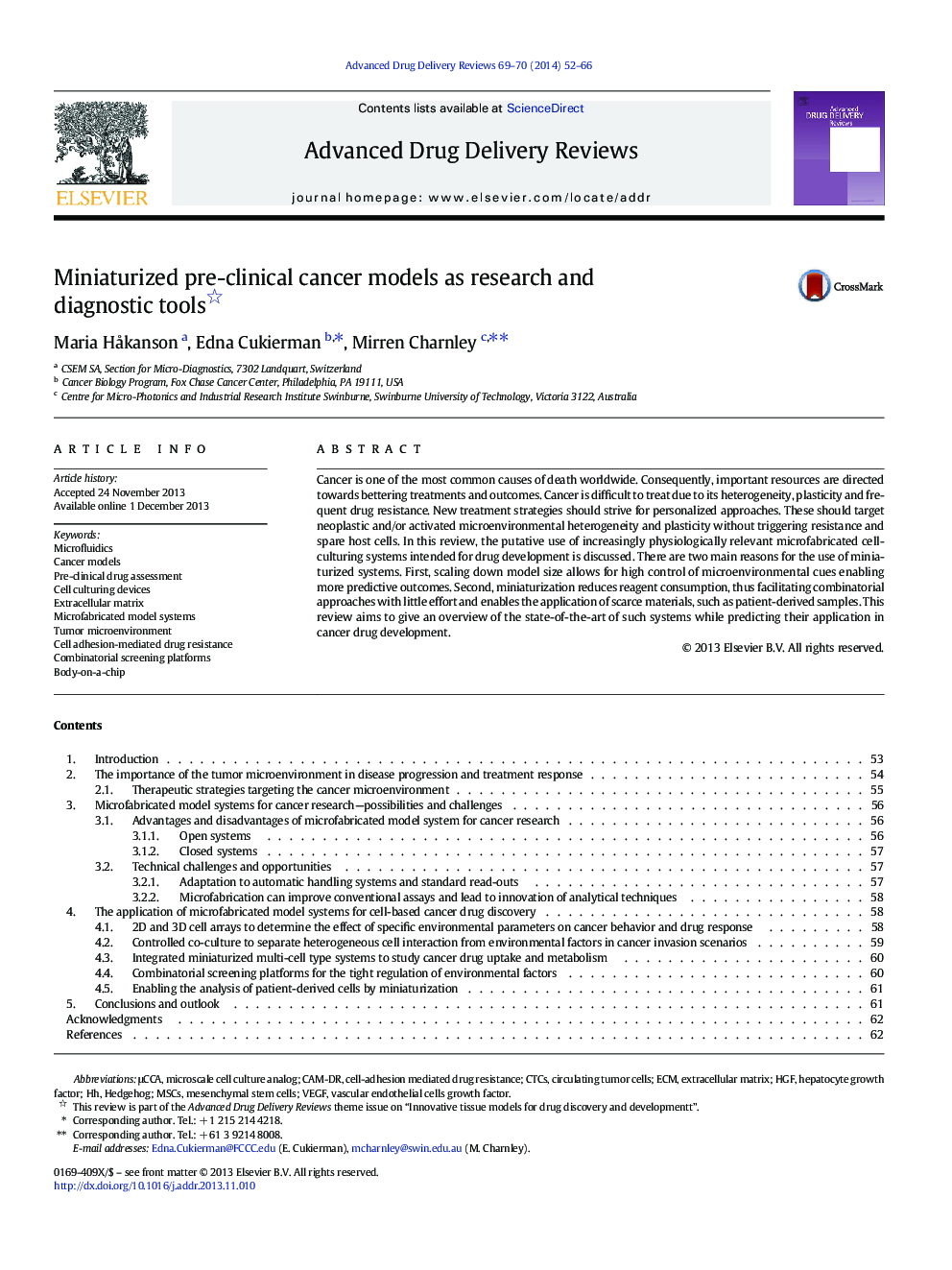| Article ID | Journal | Published Year | Pages | File Type |
|---|---|---|---|---|
| 2070853 | Advanced Drug Delivery Reviews | 2014 | 15 Pages |
Cancer is one of the most common causes of death worldwide. Consequently, important resources are directed towards bettering treatments and outcomes. Cancer is difficult to treat due to its heterogeneity, plasticity and frequent drug resistance. New treatment strategies should strive for personalized approaches. These should target neoplastic and/or activated microenvironmental heterogeneity and plasticity without triggering resistance and spare host cells. In this review, the putative use of increasingly physiologically relevant microfabricated cell-culturing systems intended for drug development is discussed. There are two main reasons for the use of miniaturized systems. First, scaling down model size allows for high control of microenvironmental cues enabling more predictive outcomes. Second, miniaturization reduces reagent consumption, thus facilitating combinatorial approaches with little effort and enables the application of scarce materials, such as patient-derived samples. This review aims to give an overview of the state-of-the-art of such systems while predicting their application in cancer drug development.
Graphical abstractFigure optionsDownload full-size imageDownload high-quality image (224 K)Download as PowerPoint slide
